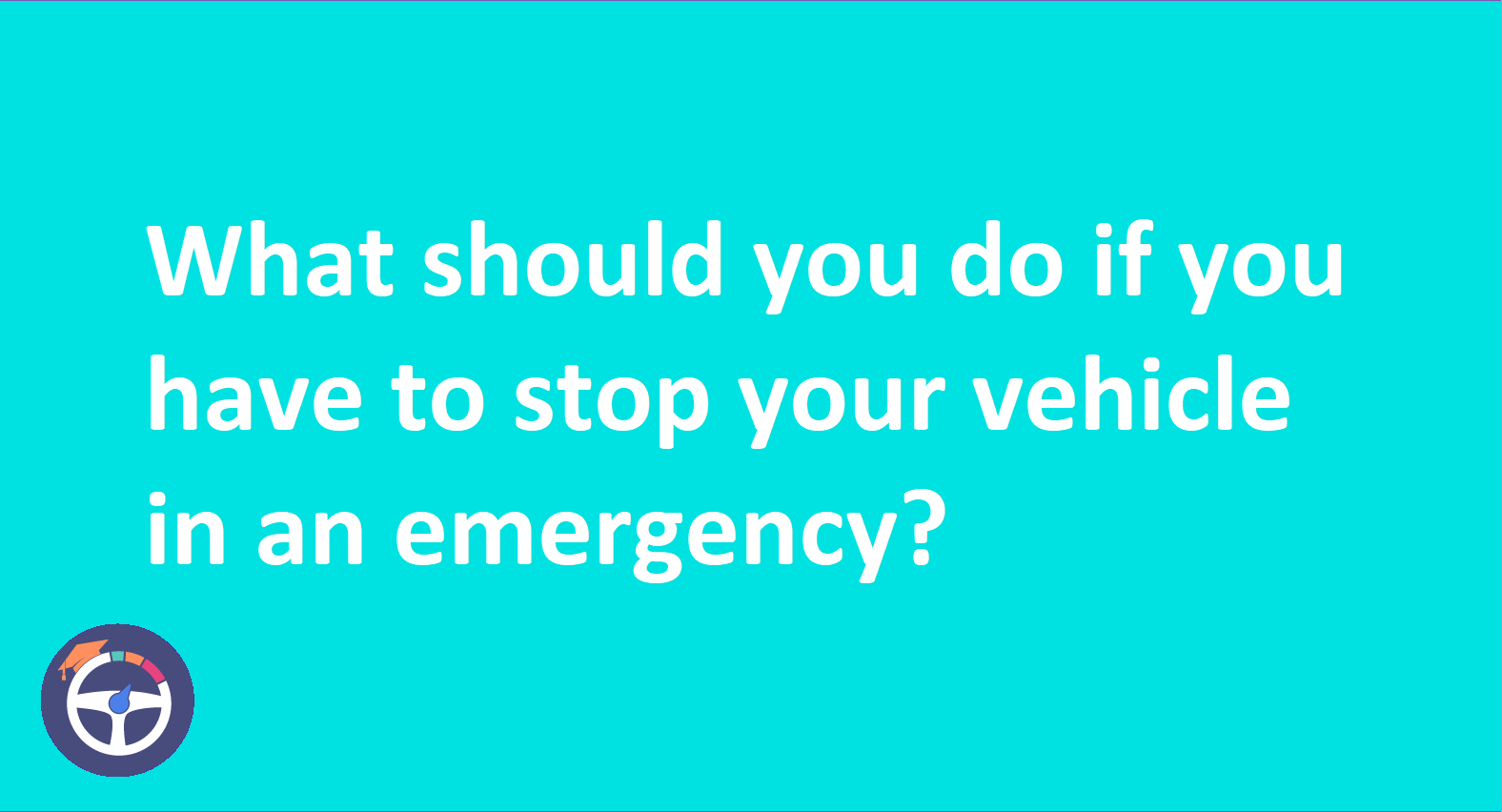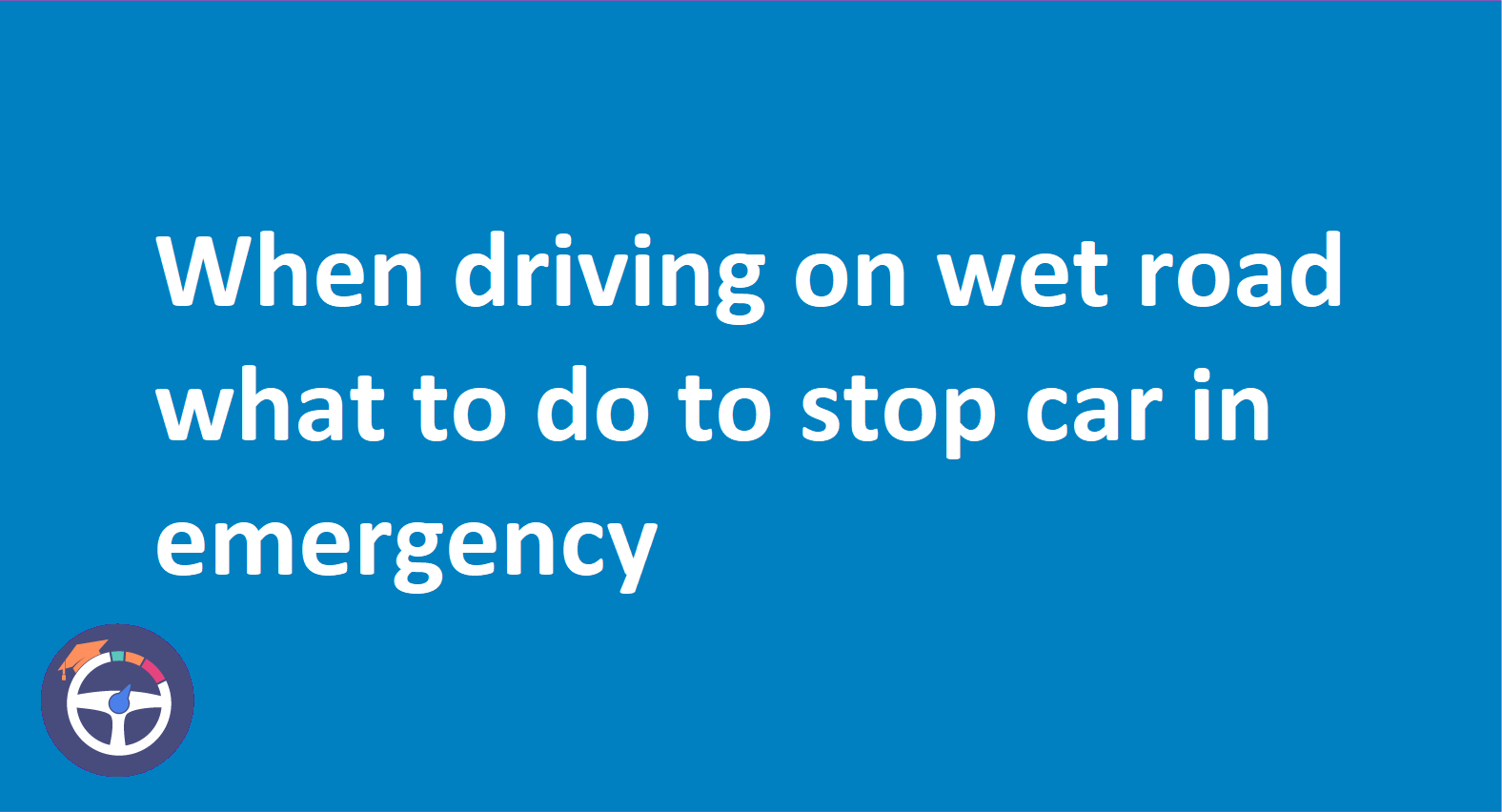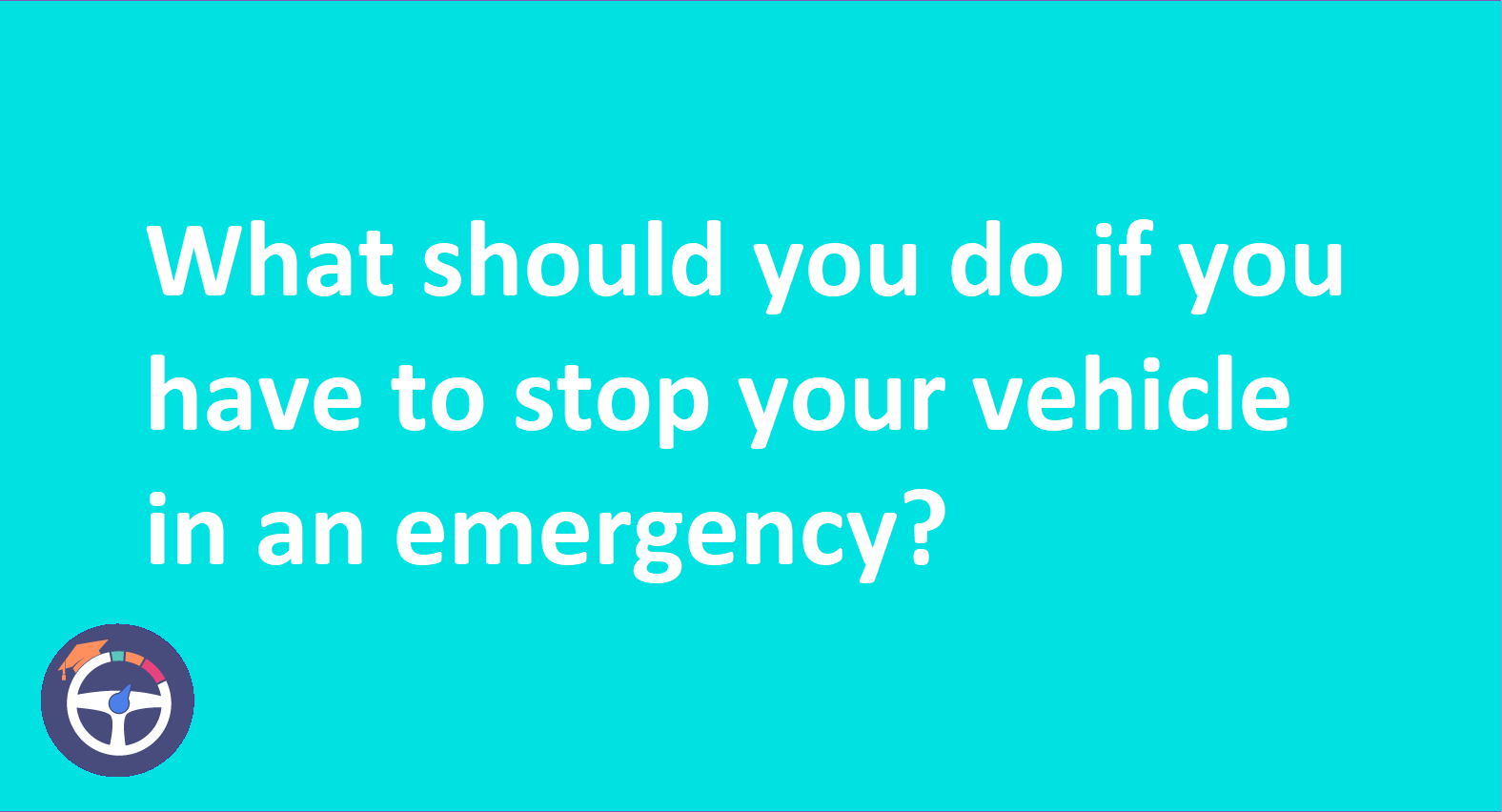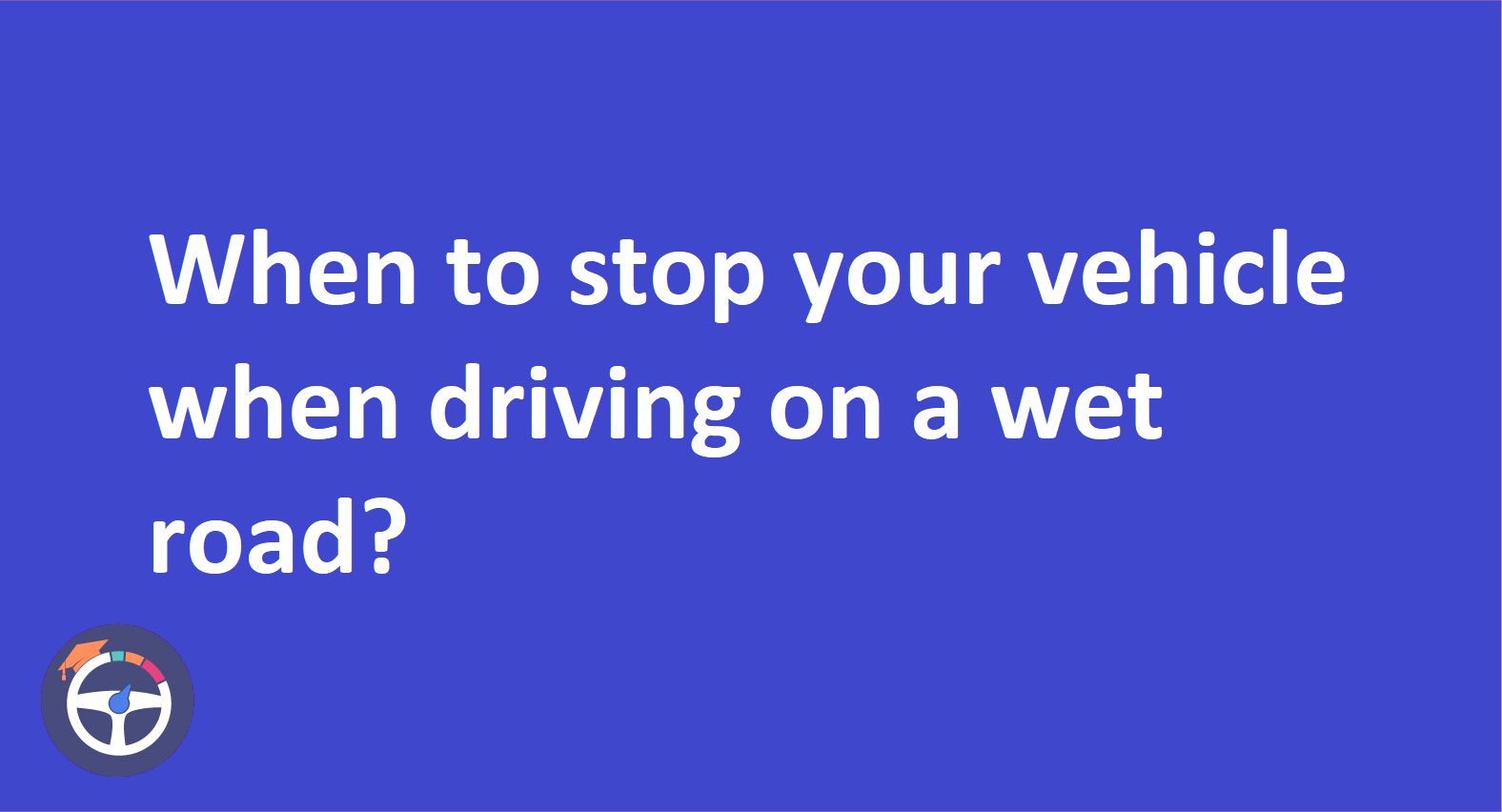What should you do if you have to stop your vehicle in an emergency?
If you need to stop in an emergency, it's crucial to keep your vehicle under control. Losing control could make the situation worse. Keeping both hands on the wheel while braking will help you maintain steering control as you come to a stop.

Contents
- What should you do if you have to stop your vehicle in an emergency?
- When Must You Stop Your Vehicle?
- Additional Scenarios for Stopping:
- How to Pull Over Safely in an Emergency?
- Additional Safety Tips:
In an emergency on the road, it's critical to know how to respond swiftly and safely. Although preventing crises is the main objective being ready for an unplanned stop can be very helpful.
When Must You Stop Your Vehicle?
There are multiple scenarios in which a complete stop is required.
Which THREE times do you have to stop your car?
1. Officers of the law or traffic: You must safely and promptly stop your car if an officer of the law gives you the order to do so.
2. Red traffic light: Running a red light is against the law and can cause accidents. At red lights stop completely.
3. Incident Causing Damage or Injury: You are legally required to stop. Exchange information with the other parties involved in an accident. Regardless of how minor the injuries or damage are.
Additional Scenarios for Stopping:
There are additional instances in which stopping your car could be essential for safety.
1. Unexpected Danger: Notice a roadside animal crossing or a stopped vehicle ahead. Apply a controlled stop to prevent an accident.
2. Medical Emergency: Stop at a safe spot and call for assistance right away if you or a passenger suddenly become ill.
3. Vehicle Malfunction: Strange noises? Is smoke coming from the engine? Find a safe place to pull over and check the situation before going on.
How to Pull Over Safely in an Emergency?
Retaining control of your car while cutting down on stopping distance is essential for an emergency stop. Here’s what to do:
1. React Fast Remain Calm: Panicking can impair your judgment but time is of the essence. Evaluate the circumstances and respond with grace and quickness.
2. Keep Both Hands On The Wheel: Maintaining complete control over the direction of your car particularly when braking.
3. Pump The Brakes: Do not slam on the brakes. This could lock the wheels. And it might result in skidding. Instead to give yourself some traction keep applying the brakes. This is called threshold braking.
4. ABS: If your vehicle has this feature press the brake pedal until it pulses. Don’t back down—ABS keeps steering control and helps avoid wheel lockup when applying emergency brakes.
5. Increase the Following Distance: You’ll have more time to react when making emergency stops when you leave enough space between your vehicle and the one in front of you especially on slick roads.
Additional Safety Tips:
1. Safe Stopping Zone: Try to stop on a level patch of ground or a shoulder that is paved if at all possible. Steer clear of sudden turns and uneven surfaces when stopping.
2. Hazard Lights: To warn other drivers of your position and possible hazards turn on your hazard lights. After you’ve stopped apply the parking brake kill the engine and evaluate the circumstances. Make an emergency service or roadside assistance call if you need assistance.
Now that you’ve understood what should you do if you have to stop your vehicle in any emergency? Remember that practicing defensive driving techniques such as keeping a safe following distance being aware of potential hazards and remaining vigilant can help avert emergency situations entirely. But being ready to stop safely in an emergency situation can really help. To increase your confidence and reaction time practice controlled braking in a secure setting. See your local driving authority or a certified driving instructor if you have any questions or need more information on emergency stopping procedures.


